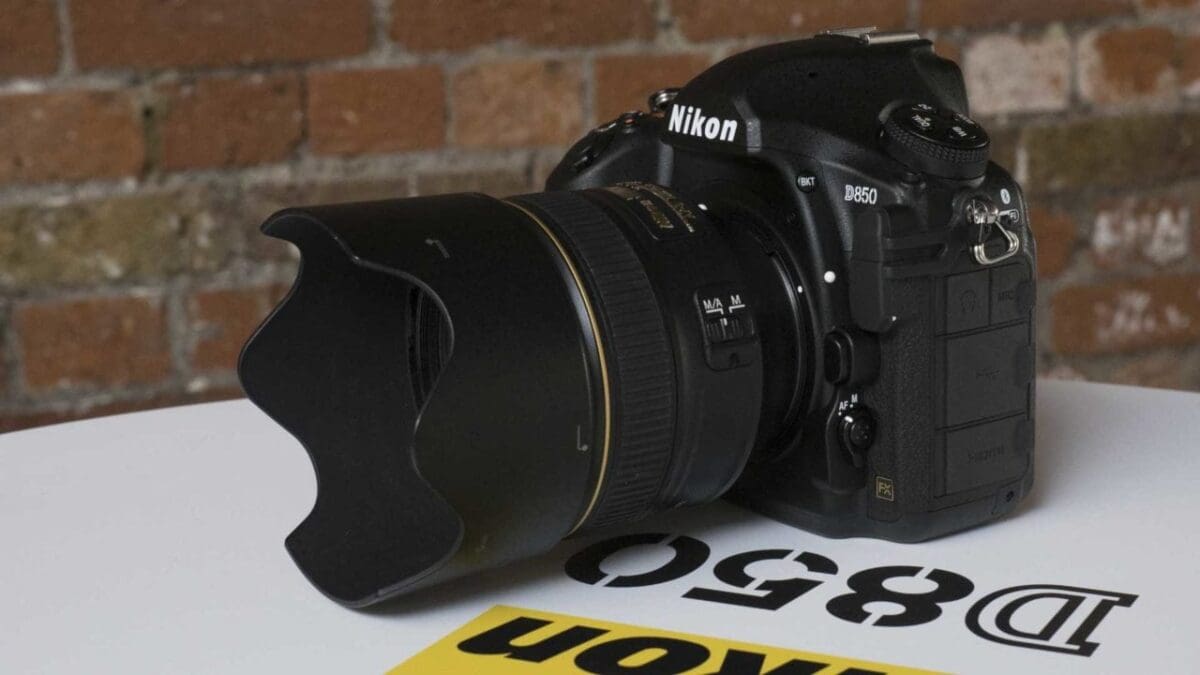Snap Verdict
The Nikon D850 is a full-frame or FX format DSLR with 45.7 million pixels on its backlit CMOS sensor. It sits below the Nikon D5 in the company’s DSLR line-up and above the D810 (which is set to continue). While the 45.7Mp sensor ensures plenty of detail is captured, the maximum shooting rate of 7fps, which can be boosted to 9fps with the optional battery-grip, plus the superb 153-point AF system should give the D850 all-round appeal for experienced photographers, professionals and dedicated enthusiasts.
Read on to see how it performed in our tests. Or watch our Nikon D850 review video above, which we filmed on location in Devon, England, where we were shooting with the camera.
We filmed our Nikon D850 review video with a GoPro Hero5 Black mounted on a Karma Grip, using the GoPro’s built-in mic, so please excuse the wind and tinny audio in places!
For
- 45.7Mp full-frame back-illuminated sensor
- 7fps continuous shooting (9fps with optional MB-D18 Multi-Power Battery Pack)
- 153-point Flagship AF system
Against
- High price
- AF points clustered around the centre of the frame
- Live View and Video focusing system lags behind the competition
Nikon D850 Features & Specifications
Inside the D850 is a full-frame (35.9 x 23.9mm) sensor with 45.7 million effective pixels. As the sensor is backlit and the micro lenses are gapless the photoreceptors (aka pixels) have the maximum opportunity to gather light. This and the Expeed 5 processing engine has enabled Nikon to give the camera a standard sensitivity range of ISO 64-25,600. There are also expansion settings that extend the range to the equivalent of ISO 32-102,400.
Another feature that will have the ears of Nikon lovers pricking up is the inclusion of the same autofocus (AF) system as is in Nikon’s flagship camera, the D5. This has 153 points with the centre point being sensitive down to -4EV and the rest being sensitive down to -3EV. A total of 99 of the points are cross-type. It means that the D850 should be suitable for shooting sport and action in low light conditions.
Of the 153 points, up to 55 are available for individual selection but if you find that too many it can be reduced to 15 via the menu. In continuous autofocus mode it’s also possible to set the D850 to use a single AF point or a group of 9, 25, 72 or 153 points. There’s also Nikon’s Group-area AF and 3D-tracking options with the latter using colour information to follow the subject.
In the D5 the AF system is paired with a maximum shooting rate of 12fps with continuous AF and exposure metering. However, whereas the D5 is a 20.8Mp flagship camera aimed at professional sports photographers and photojournalists, the D850 is a 45.7Mp model designed for a wider audience. Nevertheless, the D850 can shoot at up to 7fps as standard and 9fps when the optional MB-D18 Multi-Power Battery Pack.
These high frame rates can be maintained for up to 51 14-bit lossless compressed raw files (the D810 can only manage 28 at 5fps) or 170 12-bit lossless compressed raw files.
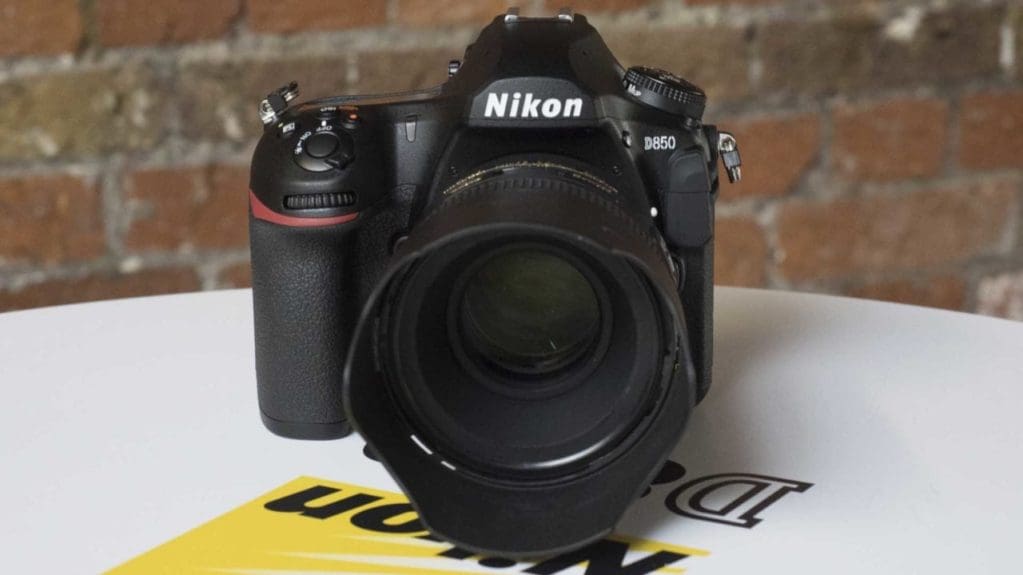
Thanks to an electronic shutter if you switch to Live View when Silent Live View mode is enabled via the menu it’s possible to shoot full-frame (FX) images at 6fps or APS-C (DX) format at 30fps completely silently. That could be extremely useful for sports and wedding photographers who need to avoid mirror and shutter movement sounds.
Shooting 45.7Mp images at 7fps or 9fps will fill a card pretty quickly but the D850 can record 12-bit lossless compressed raw files at three different sizes, full resolution, medium (25.5 Mp) and small (11.3 Mp). This means that in the medium settings the D850 produces larger images than the D500 and with the MB-D18 Multi-Power Battery Pack its maximum frame rate is only 1fps slower.
The high frame rates and deep burst depths mean that D850 users are likely to record a lot of raw files. With this in mind Nikon has included an in-camera raw file batch-processing feature that lets you apply the same adjustment to selected images. The original raw files and the processed jpegs can be saved to an XQD card. Alternatively, the originals can be saved to the XQD card and the jpegs to an SD card in the second slot – that could be useful for anyone who needs to make a tweak to raw files before handing over jpegs.
Macro photographers may be pleased to learn that the D850 has a Focus Shift Shooting option. In this mode the camera can shoot up to 300 images in a sequence with a specified shift in focus between every shot. These images can then be merged in a post-processing software package that supports focus stacking.
Like the D5 the D850 has a 180,000-pixel RGB sensor to inform the metering, white balance, autofocusing and scene recognition system. This functions down to -3EV – useful for low light photography.
Nikon’s SnapBridge technology has also been included in the D850 to enable images to be shared automatically to a smartphone connected via the free app.
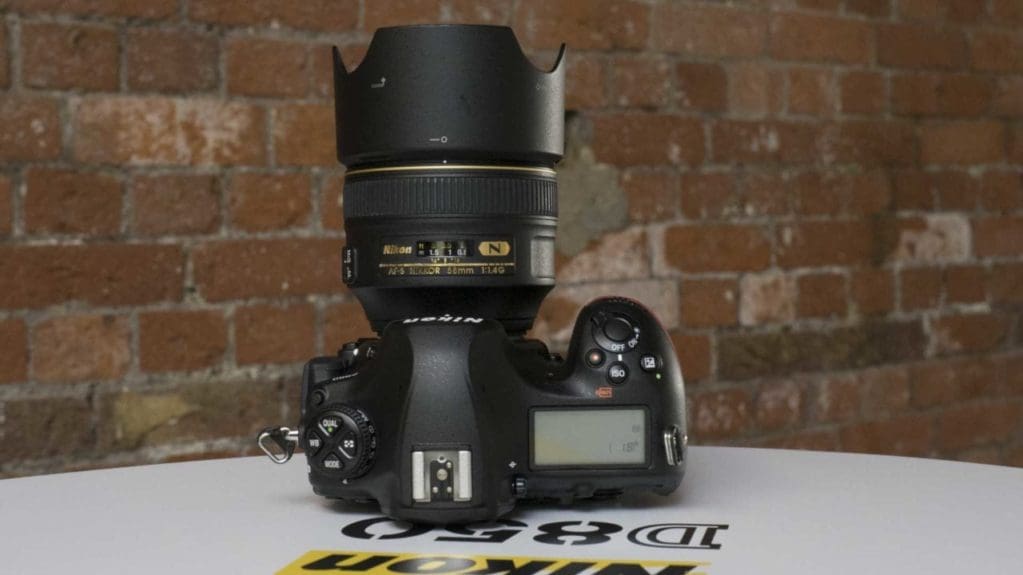
Nikon D850 video
Aiming to benefit from Nikon’s wide-angle lenses, the D850 is capable of producing 4K/UHD (3,840 x 2160) video at 30, 25 or 24p with no cropping. Alternatively, Full HD (1920 x 1080) video can be recorded at 60, 50, 30, 25 or 24p. In addition, there’s a 4x / 5x slow-motion Full HD movie option.
As well as recording video to a card in the camera, it’s possible to simultaneously record uncompressed 4:2:2 8-bit 4K files onto an external drive via an HDMI connection.
Video can be saved in MP4 or MOV format.
The inclusion of an intervalometer enables the creation of 4K time lapse movies in-camera. In addition, stills can be shot to create 8K time lapse movies but the video has to be created using a computer rather than in-camera.
Nikon has stuck with a contrast detection autofocus system for Live View and Video mode. In addition to Normal-area AF (single point), Wide-area, Pin-point, Face Detection and Subject tracking AF modes are available.
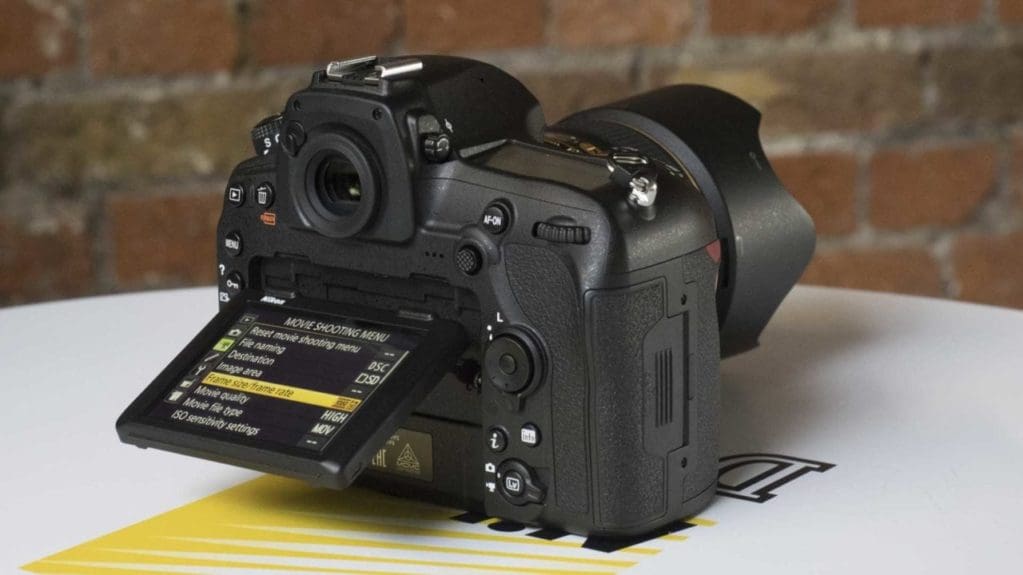
[table id=2 /]
Nikon D850 Build and Handling
The D850’s high pixel count will make it appealing to landscape photographers. To ensure it survives the type of conditions that these users are likely to experience, Nikon has made the D850’s top, rear and bottom covers, along with the internal body structure, from magnesium alloy and applied weather- and dust-sealing to all the joints.
I used the D850 in persistent drizzle and driving wind on a sandy beach (I had to wipe it clean when I got home) and it survived.
In addition, the shutter is tested to 200,000 cycles and for the first time in a Nikon DSLR there’s a counterbalance in the shutter drive to reduce vibration caused by the shutter’s front curtain downward movement. It certainly feels smoother than some earlier Nikon cameras when you’re blasting away at 7fps.
A shutter monitor also calculates the time between the front- and rear-curtain movements each time it’s fired and it corrects any variance automatically for precise exposures.
While you wouldn’t describe the D850 as a small camera, it’s the single-grip type and therefore nowhere near as beefy as the D5. It’s interesting to compare its dimensions to the D810 and D500. It’s actually a smidgen smaller than the D810 (146×124×78.5mm vs 146x123x81.5mm) and only a little bigger than the APS-C format D500 (146×124×78.5mm vs 147x115x81mm).
Nikon has used a very similar control layout to the Nikon D500 for the D850, and D810 users will notice a few small differences.
One of the most noticeable is that the D850’s mode button is within the four-button cluster above the release mode dial on the left of the top-plate. Also, the ISO button is just behind the shutter release, putting it within convenient reach of your index finger when the camera is held to your eye.
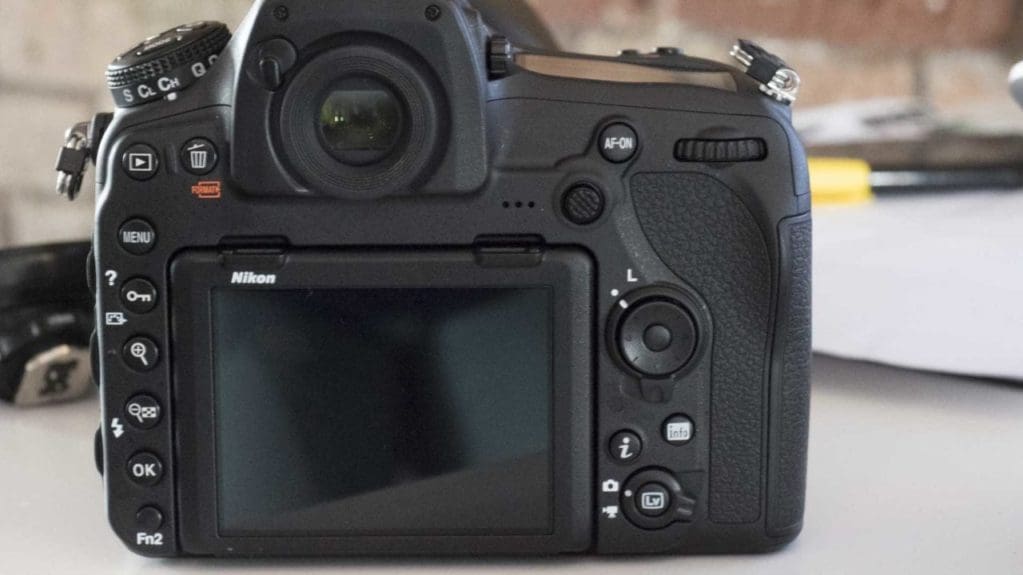
Happily, the mini-joystick controller that’s found on the back of the D500 is also present on the D850 and it offers a quick and convenient means of selecting the focus point that you want to use.
Frustratingly, however, Nikon has continued to use the I and Info buttons on the D850 with Info button activating a display that shows key settings but not allowing any interaction or adjustment. Meanwhile pressing the I button brings-up a list of features that can be adjusted but that in stills mode includes aspects such as ‘Custom control arrangement’ that you’re unlikely to want to use on a frequent basis. It’s a bit more relevant in video mode, however, giving a quick means of adjusting aspects such as headphone volume and peaking level.
Nikon has mounted the D850’s 3.2-inch 2,359,000-dot rear screen on a tilting bracket and made it touch-sensitive. That’s particularly good news for videographers but it’s also handy for anyone who likes to shoot low-level images in landscape format.
The screen is the same as the one on the Nikon D5 and it provides a very nice, clear view, making images look crisp and vibrant. It’s also responsive to a tap of your finger AND you can use it to navigate the menu and make setting selections as well as zoom in and out of images.
Nikon D850 Performance
While you can’t leave the D850 completely to its own devices in Matrix metering mode, it’s fairly predictable and an experienced photographer can anticipate when some exposure compensation might be required. If you want print or share-ready images direct from the camera you’re likely to have to dial in some extra exposure if there’s a bright section of sky in the frame – but not always.
When I was photographing kite surfers and my dog on a wet beach, for example, I had to apply +1.3EV exposure compensation to ensure the subject was nice and bright. When I was shooting sunlit dunes, which are also quite pale and bright, however, I found the camera took it all in its stride and no compensation was required.
As the D850 has good dynamic range its images can withstand significant brightening (in excess of 3EV with raw files), so there’s little harm in underexposing to protect every last drop of detail in the highlights.
The D850 has four Auto White Balance options, Keep White (Auto0), Normal (Auto1) and Keep warm lighting color (Auto2), plus Natural Light auto. I used the natural Light auto, Normal and Keep warm for the majority of my images and I was happy with their appearance. Similarly, the Daylight setting also produced good results in outdoor conditions.
I found the default Standard Picture Control is a good all-round option that delivers attractive images in many situations. The D850 is likely to be used by a range of photographers and while many will want to work on raw files, some will need jpegs that are good to go straight from the camera.
The Nikon D850 uses Nikon’s EN-EL15a 7V 1900mAH battery. This provides enough charge for a claimed life of 1840 shots and I saw no reason to doubt it with a prolonged shoot of 550 images, including a few 30sec exposures and lots of reviewing, only decreasing the power level to 3/5ths.
Nikon D850 Autofocus
As it has the D5’s autofocus (AF) system it’s not really a surprise to find that when you’re shooting using the viewfinder the D850 can focus quickly even in low light conditions. It’s very effective. However, it’s worth noting that in common with other full-frame DSLRs, the AF points are somewhat clustered around the centre of the frame and don’t extend close to the edges. This is an inevitable impact of the SLR design as increasing the size of the AF sensor would have significant repercussions for the size and shape of the camera.
When I set the D850’s AF system to use all 153 AF points while I was photographing some kite surfers with the Nikon 80-400mm AF-S Nikkor f/4.5-5.6G ED VR, I found the camera did a good job of tracking the large, colourful kites. When the kite was out of the frame, however, it was less certain and rather than tracking the surfer, it often latched onto the surf in front of or behind the intended target.
I switched to use 25 points so I could specify the general location of the surfer and then try to keep the large active area over the subject. The D850 seemed to get them sharp effortlessly.
Moving up the beach, I (inevitably) turned the camera towards my dog. This time I used 25-point and 9-point continuous focusing and provided I kept the active area over him, he was rendered sharp. It performed just as well when photographing running along a densely wooded track with low light levels.
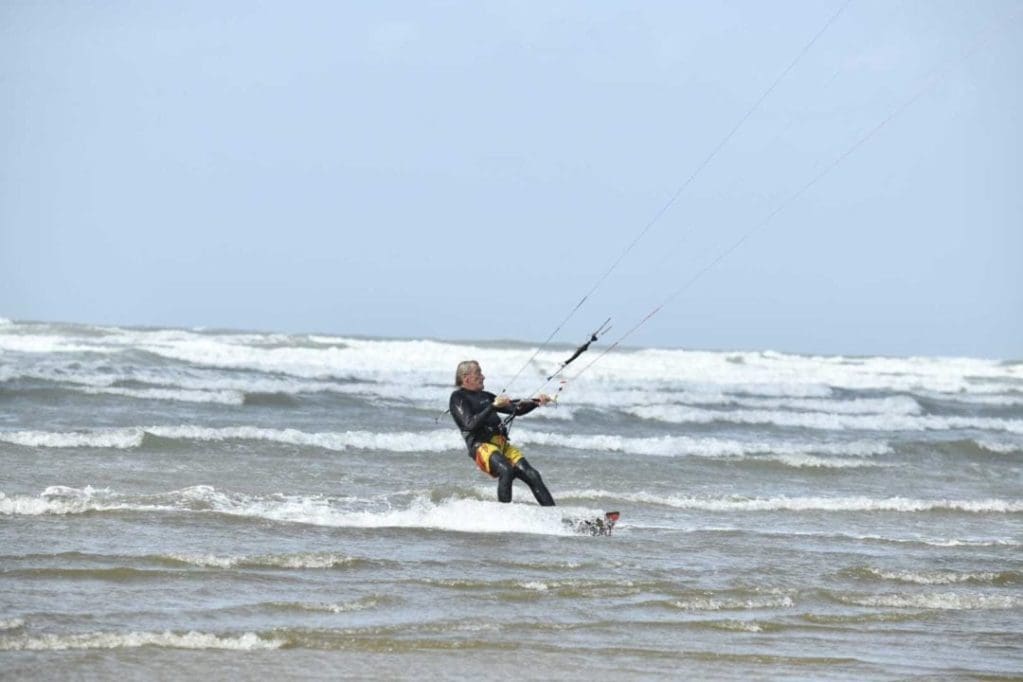
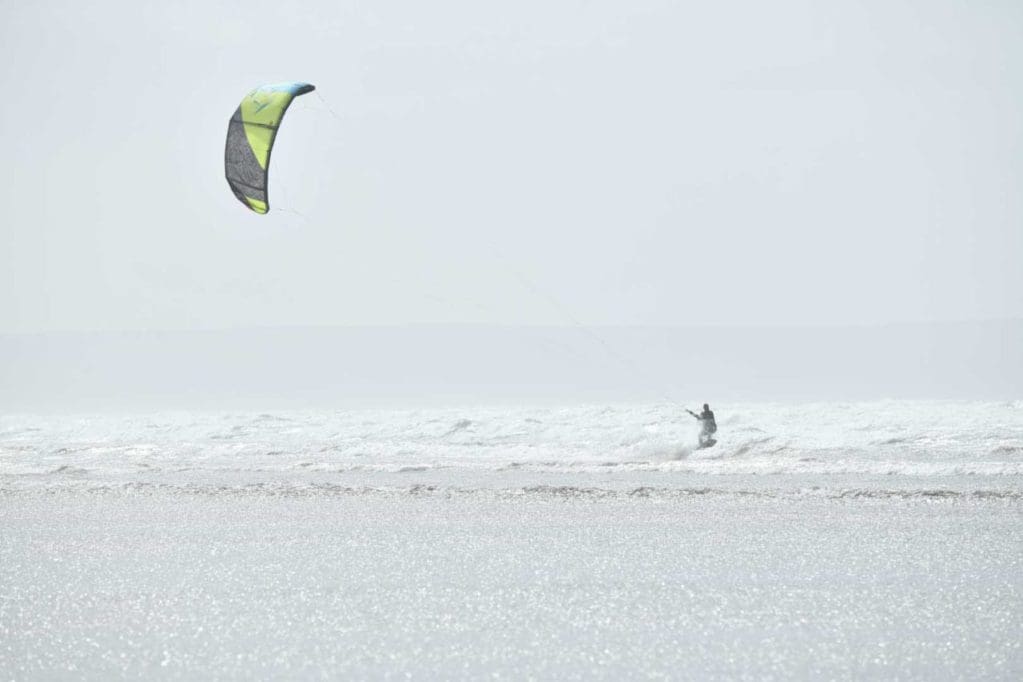
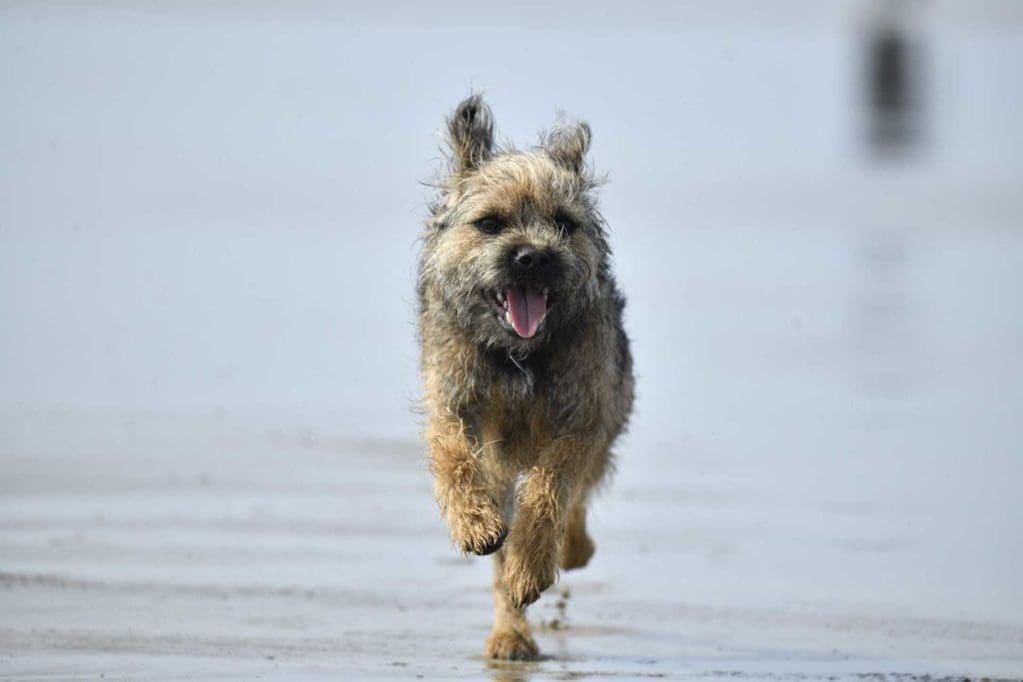
Nikon has stuck with contrast detection for the D850’s Live View and video modes. While it seems good for a Nikon DSLR (I suspect this is largely due to the high-end processor and good noise control of the imaging sensor), it lags behind that of Canon’s Dual Pixel CMOS AF system which enables faster and more decisive phase detection focusing.
Nikon D850 Image Quality
After shooting with the D850 in a wide range of conditions it’s clear that it’s capable of resolving a lot of detail and noise is kept in good check within the native sensitivity range.
A slight texture of luminance noise is visible in even-toned areas of images shot at ISO 800 if you look for it at 100% on-screen but images shot at lower values are clean and there’s bags of sharp detail.
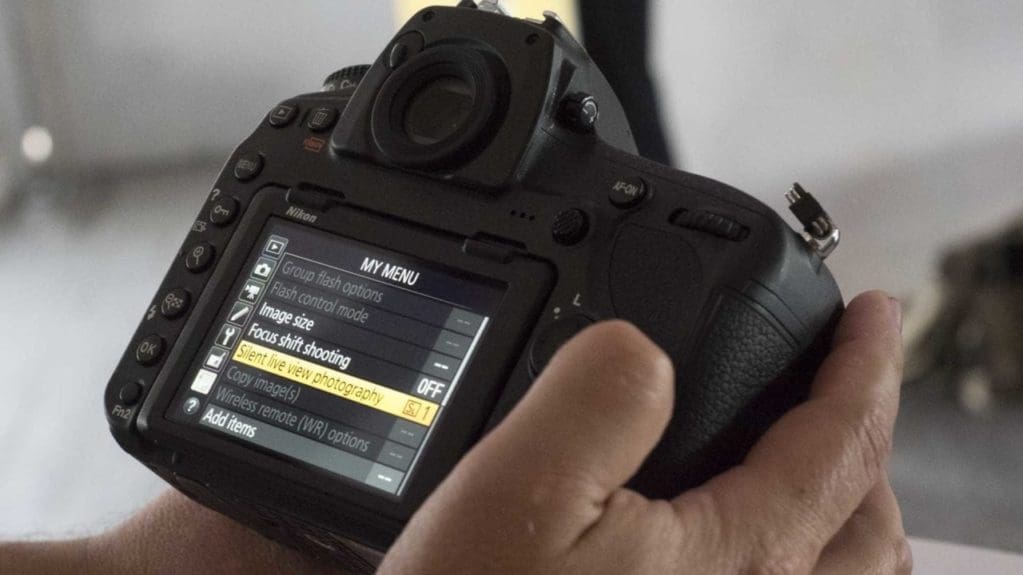
Images taken at the uppermost native sensitivity setting (ISO 25,600) look good but there’s inevitably some loss of detail. At 100% on-screen some strands of hair in a jpeg of a head and shoulder portrait look nice and clear while others are lost. When these images are sized to around 30x40cm (12×17 inches) they look fine.
Comparing high sensitivity raw files with simultaneously captured jpegs reveals that, as usual, the raw files have a tad more detail visible at 100% although there’s a fine texture of luminance noise. This makes the weave of fabric look a little more natural and crisp in raw files than it does in jpegs. There’s not much difference at normal viewing a printing sizes but if you had two large prints next to each other you’d probably prefer the raw file.
The images taken in the upper expanded range also look pretty decent. That’s not to say I’d use them routinely, I wouldn’t. There’s 100% there’s a crosshatch pattern visible in ISO 102,400 images and the subject looks a bit soft (smudgy even in some places) at normal viewing sizes, but it’s usable for reporting purposes.
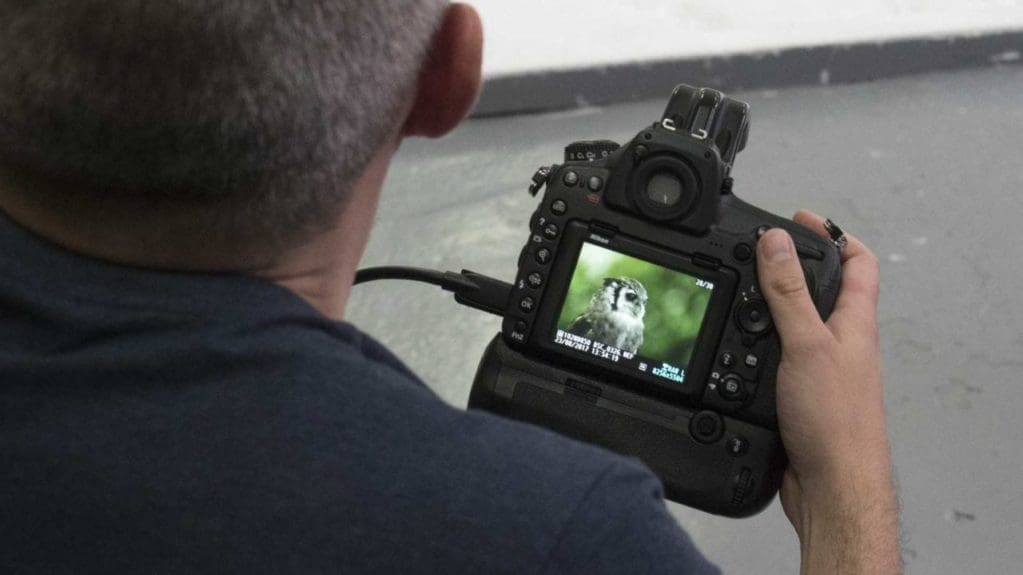
Nikon D850 Sample Images
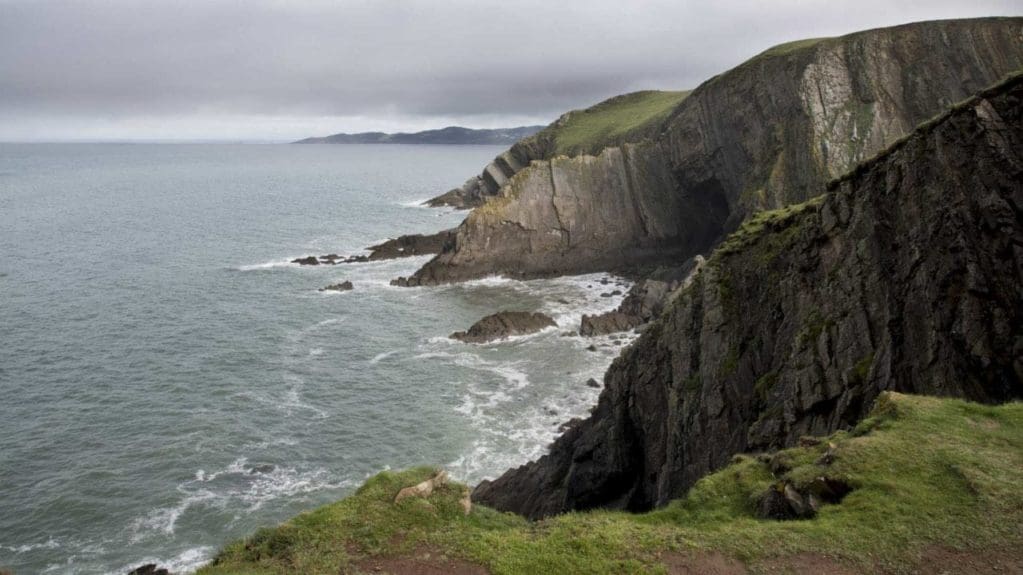


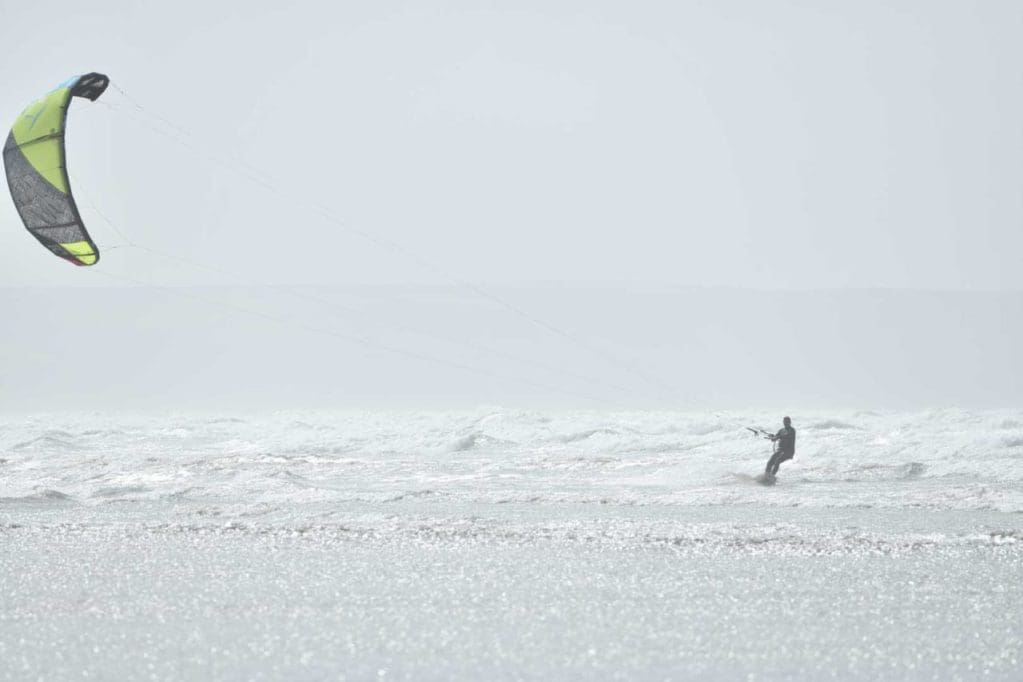


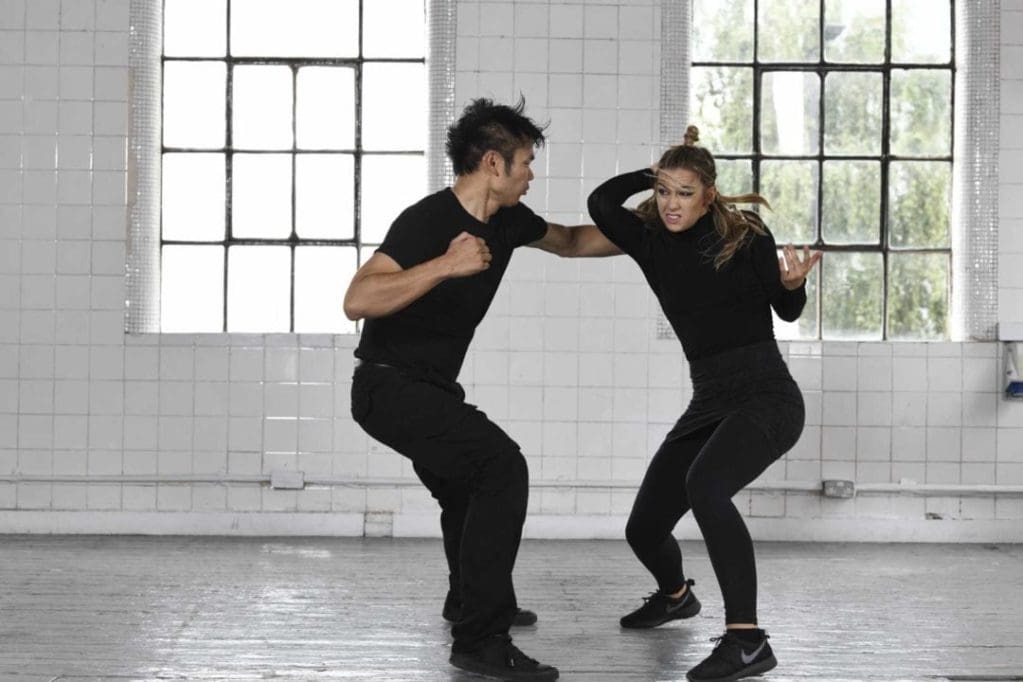



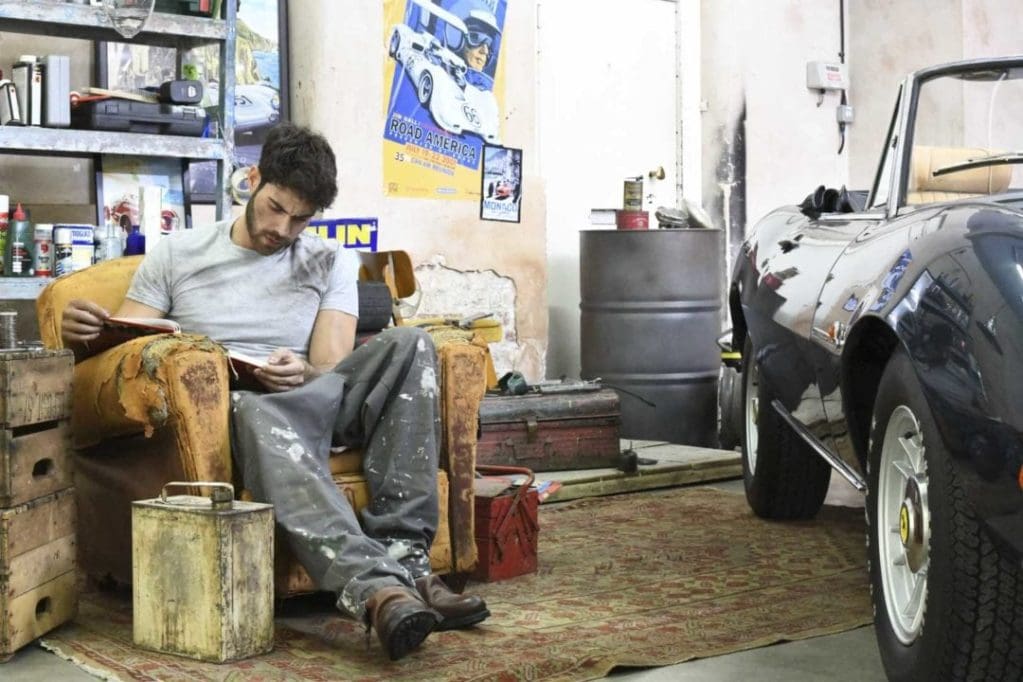
Follow this link to view and download more full resolution images from the Nikon D850
Nikon D850 review Verdict
Because of its combination of high pixel count and fast shooting rate along with a wide sensitivity range, Nikon is pitching the D850 as two cameras in one and it’s a reasonable argument that makes the launch price (£3,499.99/$3,296.95) a little more palatable.
Photographers normally have to choose whether they want high resolution or high frame rates and sensitivity settings, but the D850 is like a boosted D810 combined with the D500. It’s extremely capable with a very fast, accurate focusing system and a sensor and processor combination that delivers high-quality images.
Bar a relatively minor niggle that I also have with other Nikon DSLRs, the handling is excellent. The grip is deep and comfortable to use and all the controls are within easy reach. Changing focus mode, AF point selection mode and AF point is all very easy with the camera held to your eye and you look through the large, bright viewfinder. The touchscreen is also very responsive and it provides an excellent view of the scene.
To summarise the Nikon D850, it’s a well-built camera with a high-level specification that delivers first-rate images in tricky situations.
Should I buy the Nikon D850?
If you’re looking for a high-quality DSLR that can be used in poor weather and get moving subjects sharp or deliver large images with lots detail then the Nikon D850 is an excellent choice. Its price puts it beyond the reach of many but its full-frame sensor, flagship processor, high-quality build and extensive feature set as well as the two-cameras-in-one functionality go a long way to justifying it.
One word of caution, however, while the video quality is very good, this is not the camera to chose if you want to use autofocusing in video mode.
[/nextpage]

